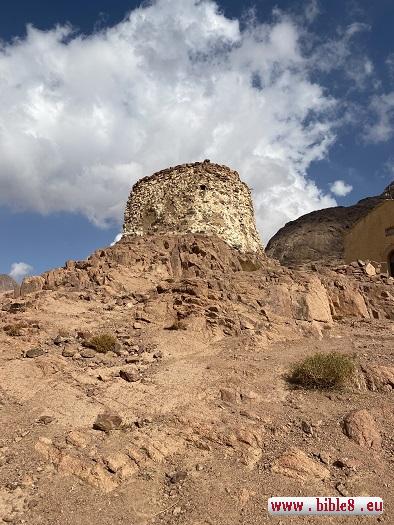
The Tomb of Aaron
- the High Priest and Brother of Moses -
on the Sinai Peninsula?
The tomb of Aaron, the legendary High Priest and brother of Moses, is one of the most significant holy sites in the traditions of Judaism and Christianity. The exact location of this tomb remains a mystery to this day.
Coordinates on the map: 28.56608092681559, 33.96540140926176 :
According to the Bible, Aaron was the older brother of Moses and played a central role in the history of the Jewish people. He was the first High Priest, leading the services in the Tabernacle during the wilderness journey. Aaron served as a mediator between God and the people and held great religious importance.
Aaron is said to have died on Mount Hor at the age of 123, according to Numbers 20:23–29, but the exact location of this mountain is disputed. The fact that his death is mentioned in the Pentateuch and not in the Book of Joshua suggests he died before the people entered the Promised Land – implying that his tomb may lie on the Sinai Peninsula.
Although Mount Hor is often associated with Jordan (Petra), there is a tradition among Bedouins and monks on the Sinai that Aaron was buried there. Greek Orthodox monks from the Monastery of St. Catherine have long maintained the site and built a chapel there.
Before his death, Aaron passed on his priestly office to his son Eleazar, marking the beginning of a new line of High Priests. The question of the exact location of his tomb remains debated among scholars, as many theories have emerged over the centuries.

According to the map, this location is marked as the Tomb of Aaron. Although some claim the tomb is located elsewhere, the nearby Greek church highlights the religious significance of the site.
The question of the exact location of Aaron’s tomb remains open.
Jewish tradition records how burials were conducted during the 40-year wilderness journey on the Sinai. It is said that before each Sabbath, everyone dug a grave for themselves and lay in it—just in case they died that night. If true, this reflects the intense moral pressure the people endured for forty years—due to their doubt in God's guidance and refusal to enter the Promised Land.
Considering the landscape of the Sinai, it may also explain the Jewish custom of leaving stones on graves rather than flowers—perhaps it was easier on the Sinai to cover a grave with stones than to dig in the rocky ground.
2025
Donation
© 2012 - 2025
